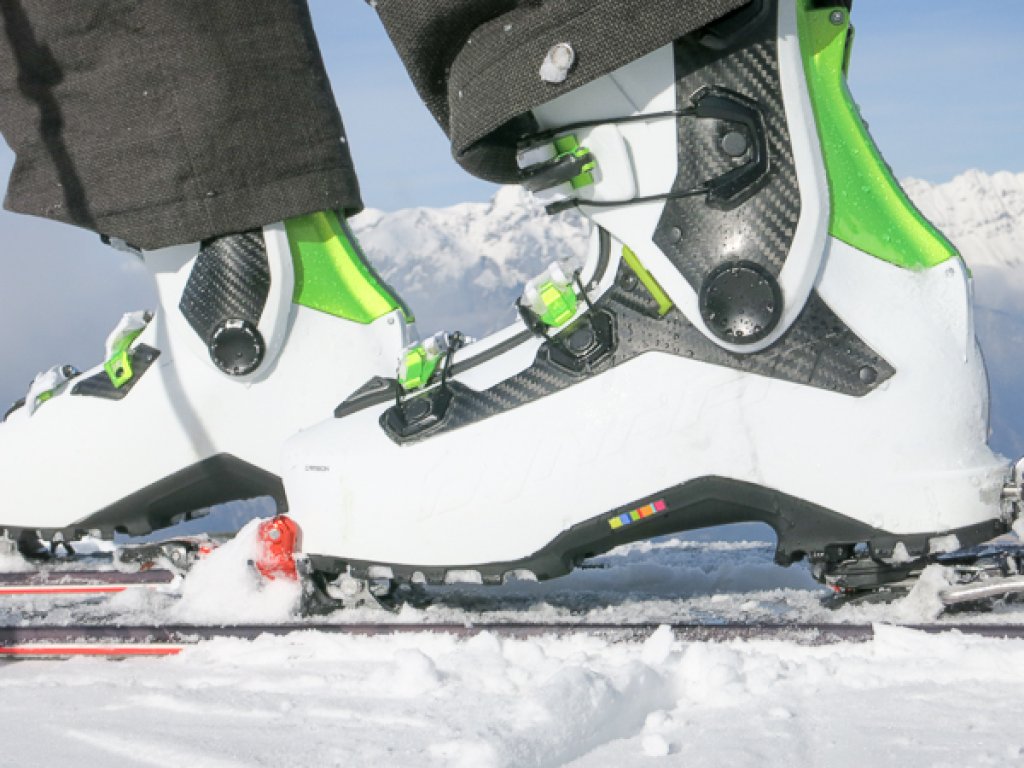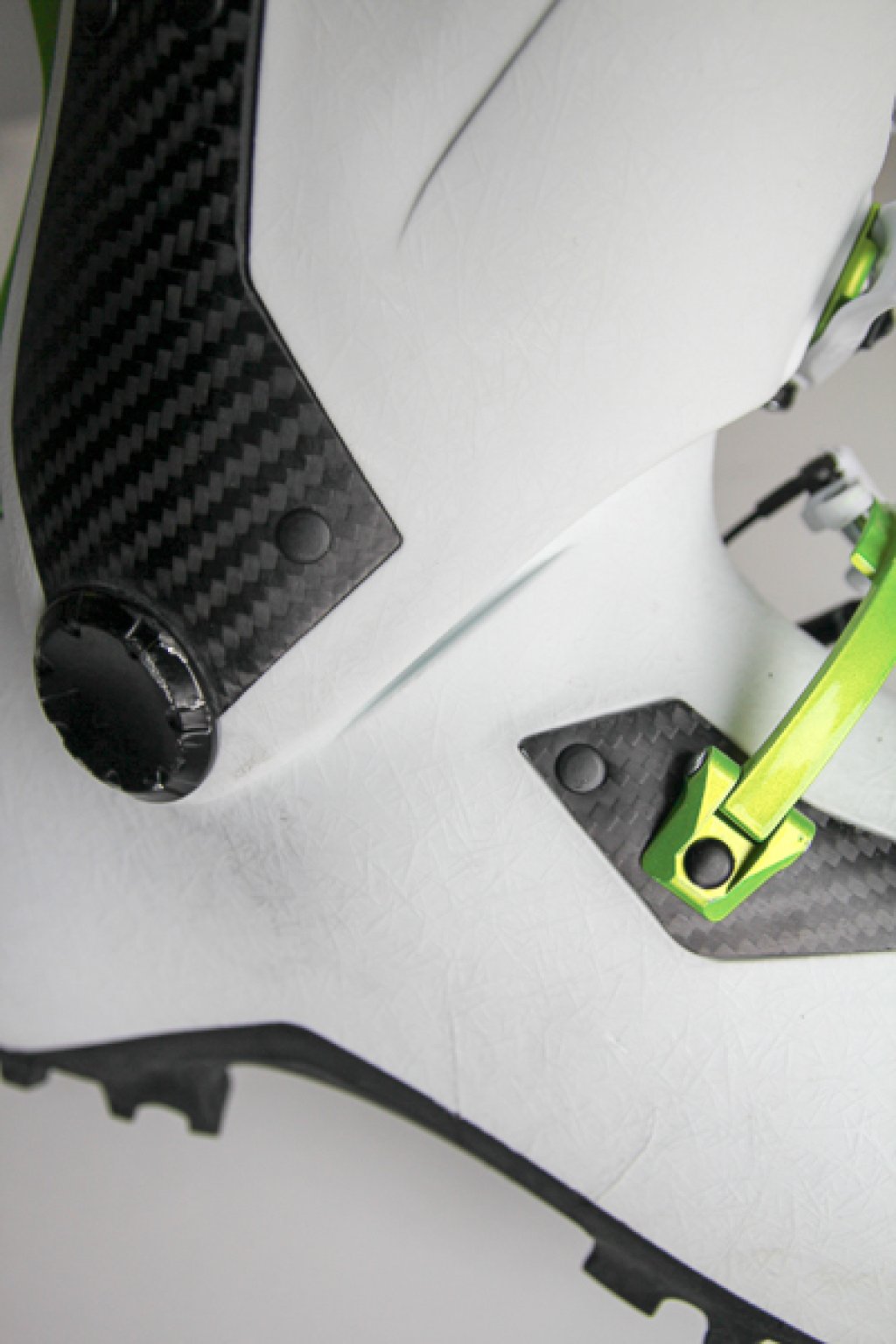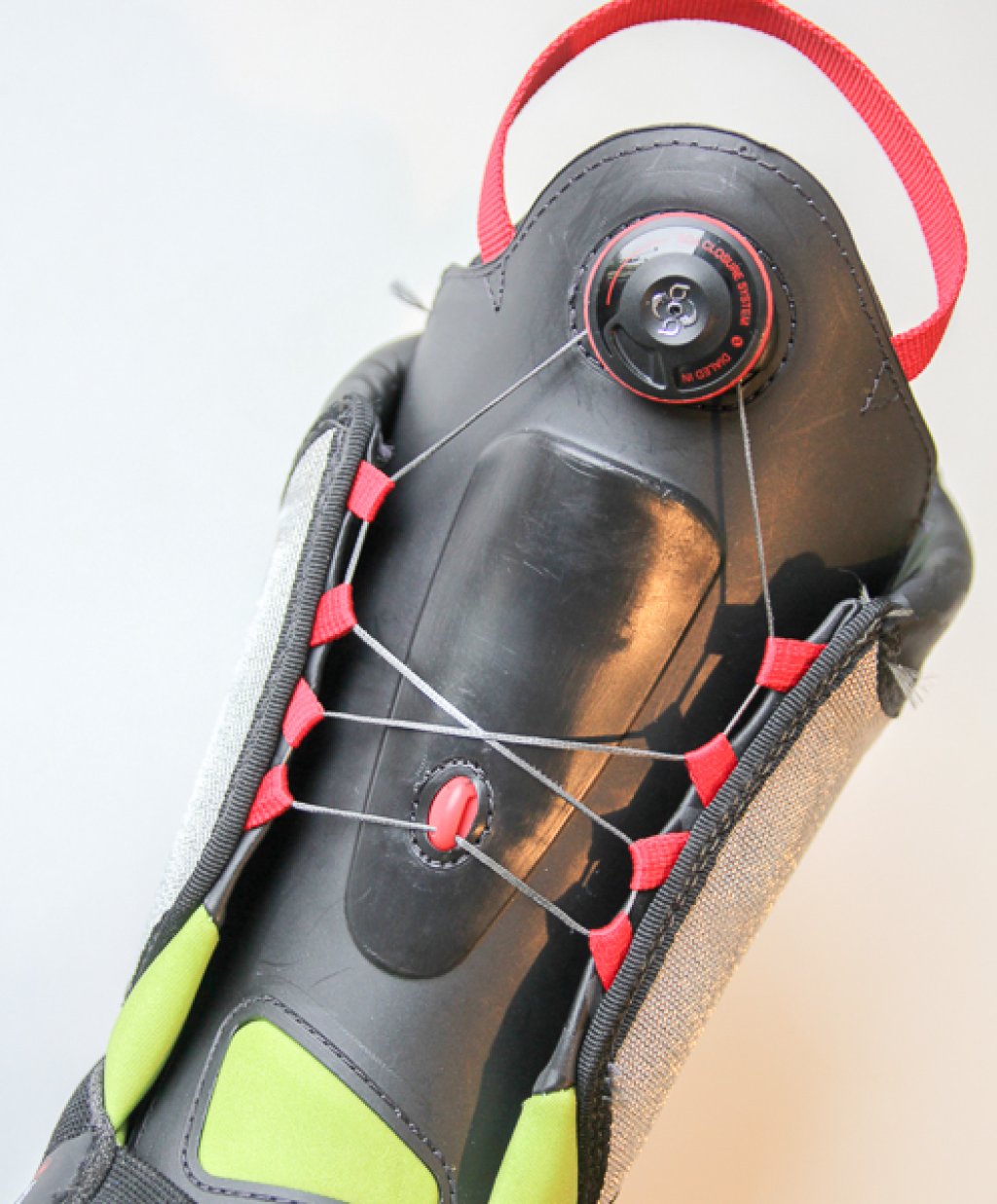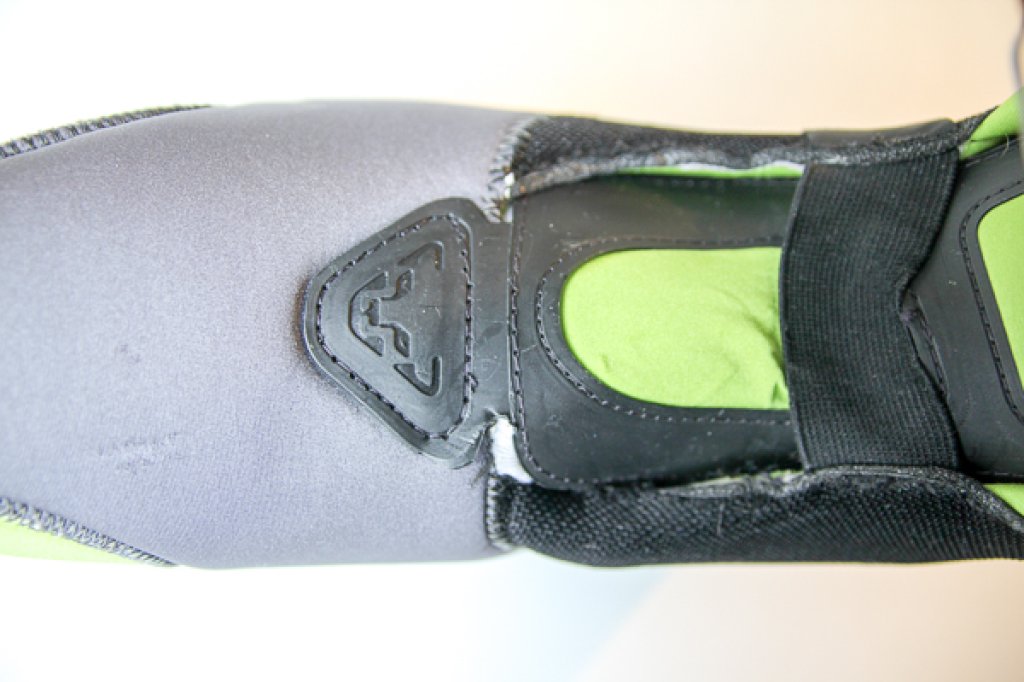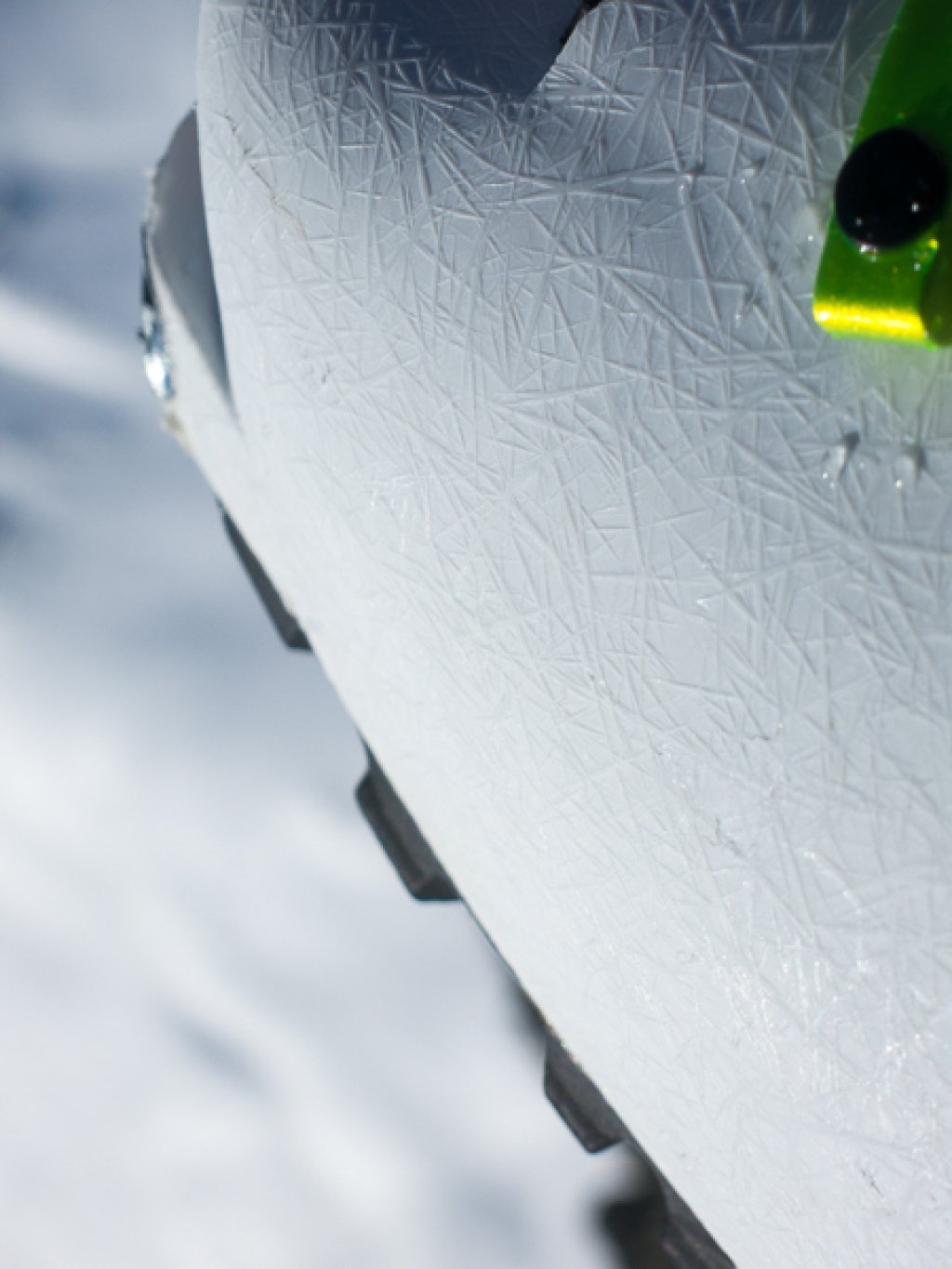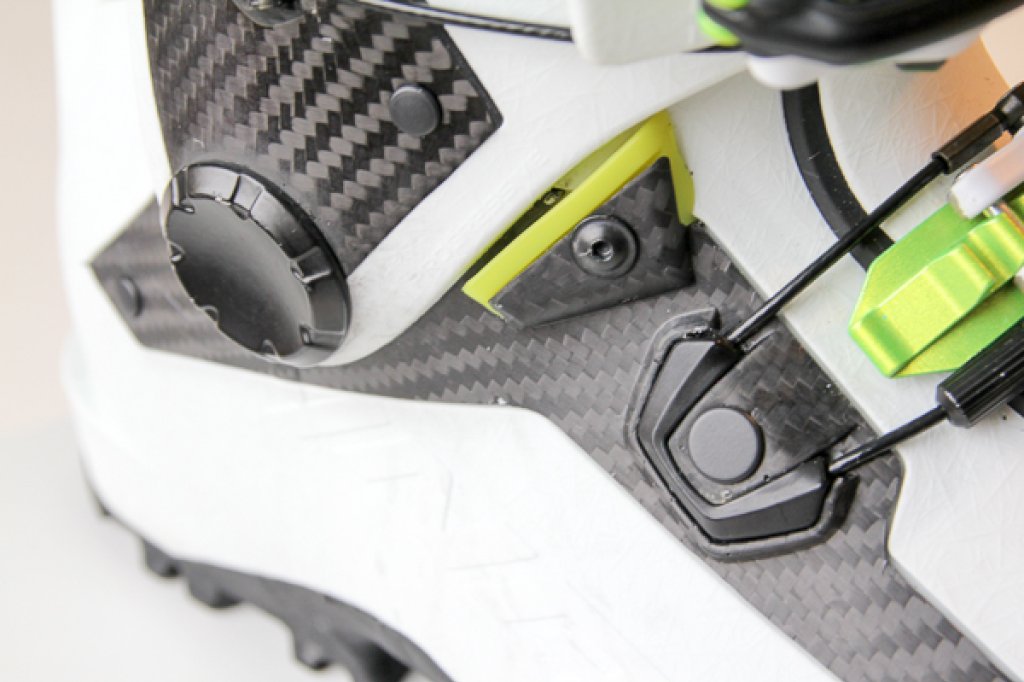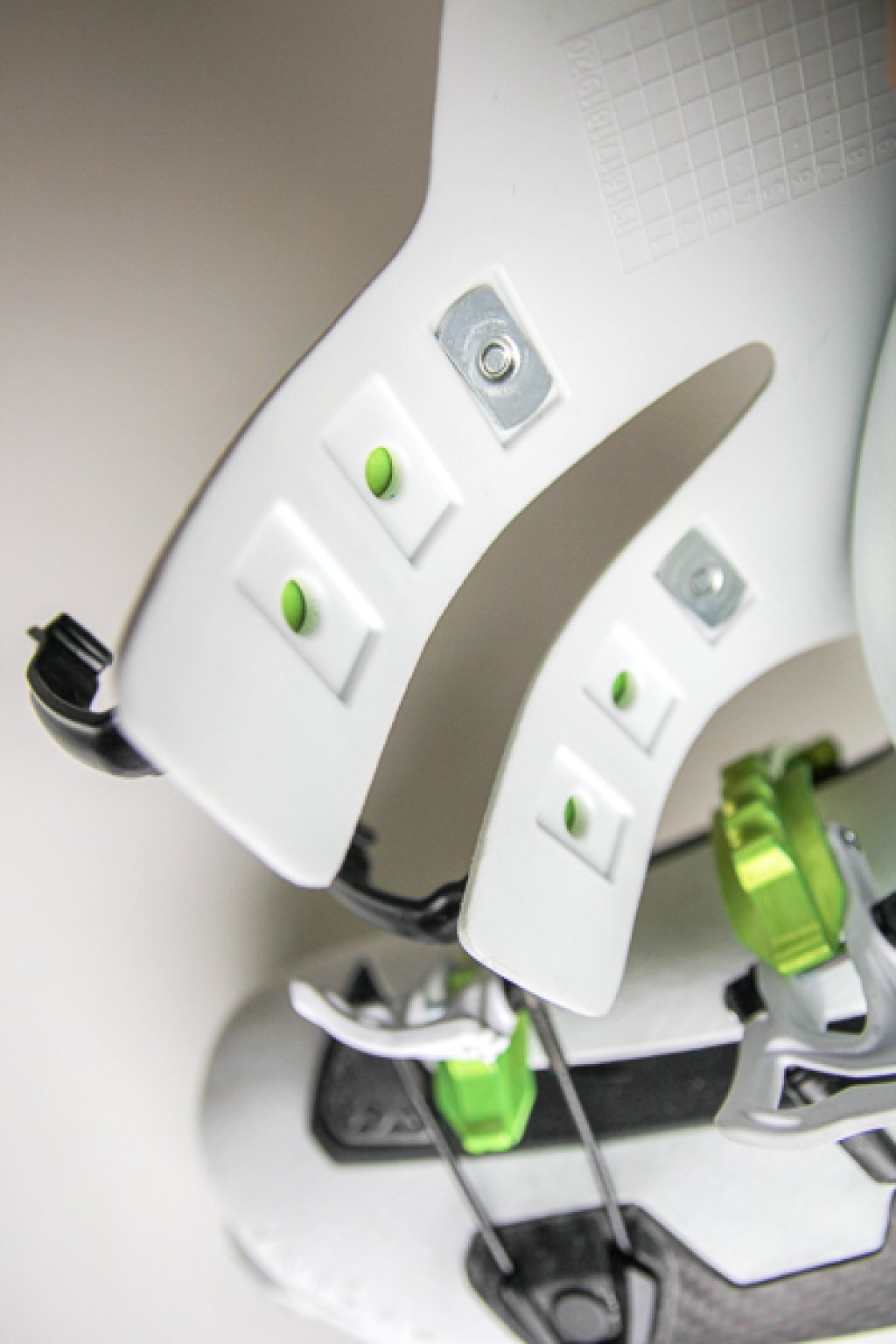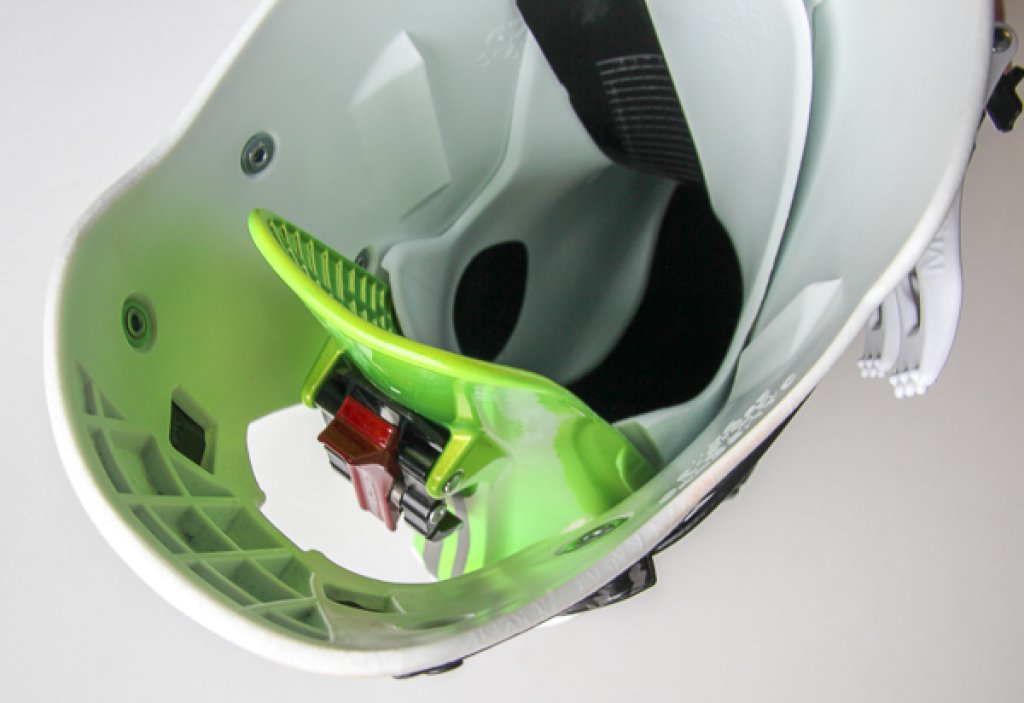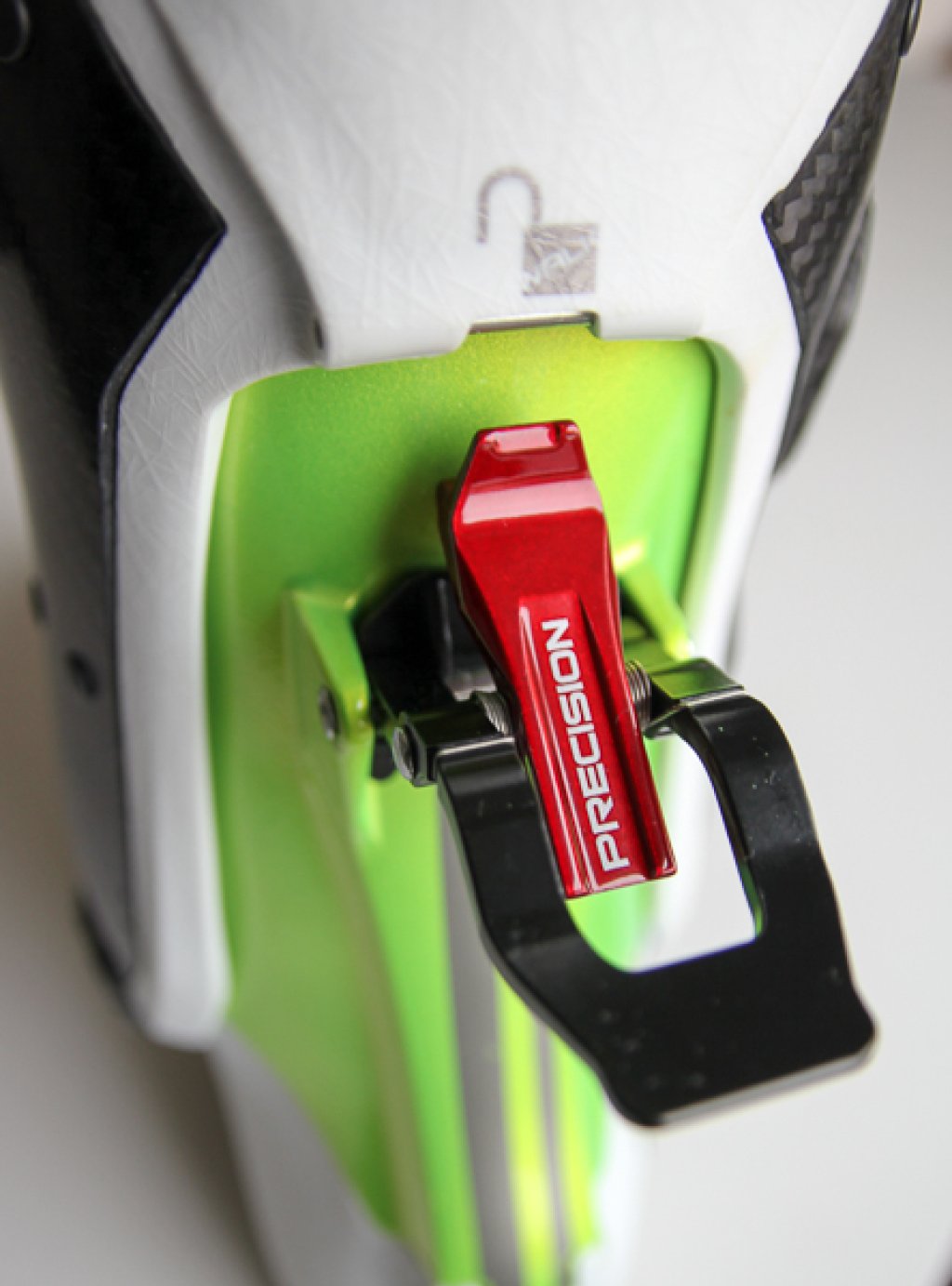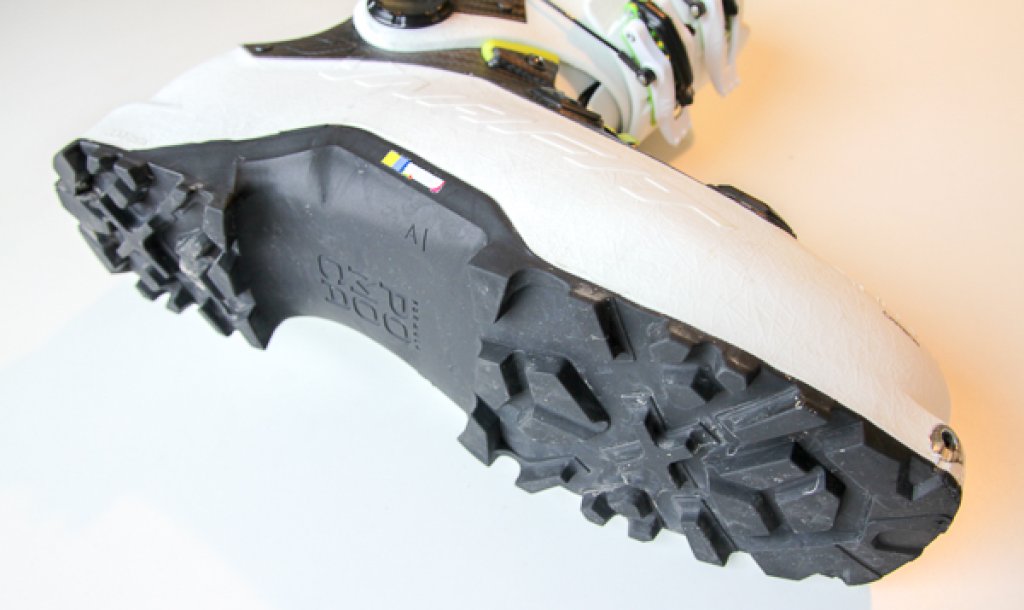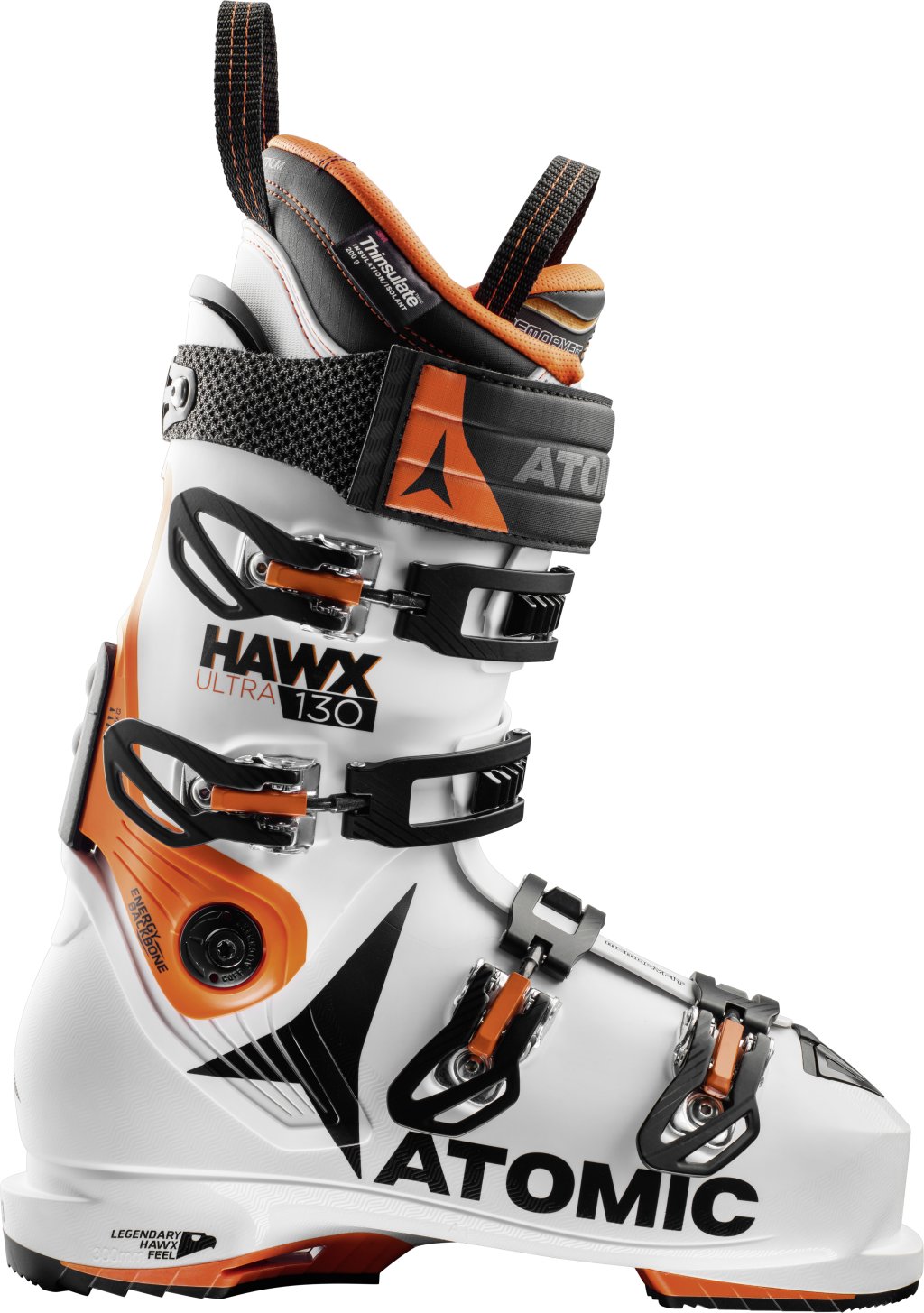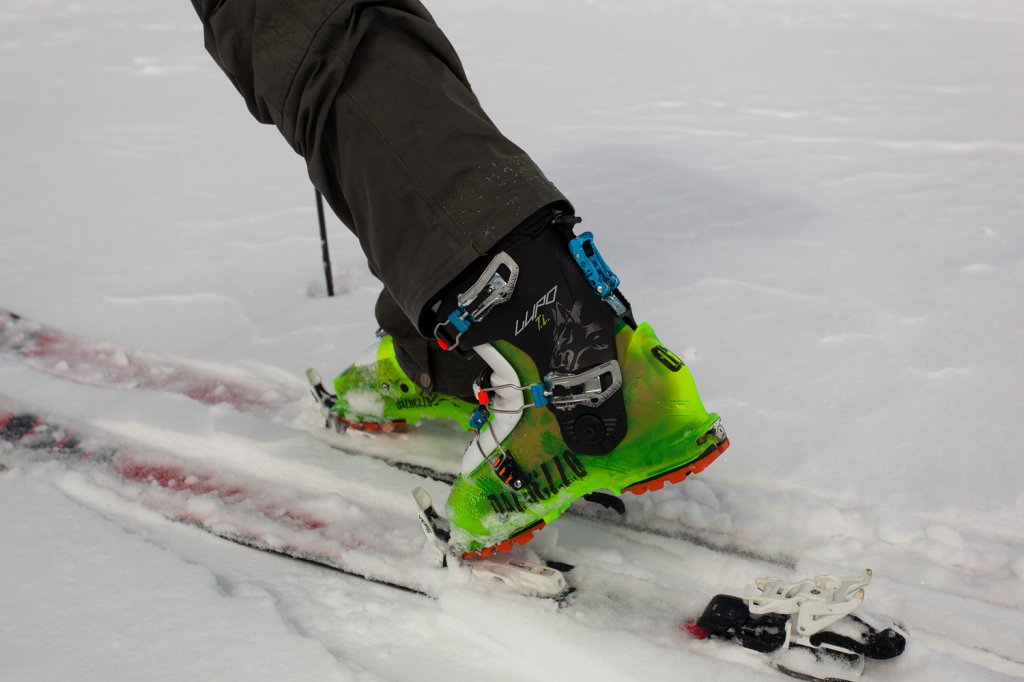The traditionally ascent-oriented brand Dynafit has also embraced the freetouring trend and has been offering freeride outfits and skis as well as the Khion touring ski boot trimmed for downhill performance since the 15/16 season. We tested the carbon version of the boot over the course of a season in all types of freeriding and ski touring. Find out in our test report whether the time of compromises between uphill and downhill performance is finally a thing of the past with the Khion.
First impression
The Khion Carbon meets the expectations of a top model from Dynafit and a price of 700 euros when you first get to know it. The materials used are high quality and very well made. The feel of the buckles, the liner and the sole is very appealing. Visually, you can already recognize the intended mix of downhill-oriented freeride boot and ascent-oriented ski touring boot. Four buckles, a striking magnesium spoiler on the back and the BOA system emphasize the downhill orientation. Lightweight buckles, the shape of the shell and the highly profiled touring sole are reminiscent of touring boots. The shell is made of Pebax plastic and reinforced with a so-called "External Exoskeleton". The resulting hardness is visually emphasized by the many carbon parts used for reinforcement. The green magnesium spoiler integrated into the shell, which additionally reinforces the rear part of the Khion, is clearly visible. The buckles are made of aluminum and are partially connected to the shoe with wires. This construction may appear somewhat delicate at first glance, but has proven to be robust in practice. The second buckle can be adjusted using a micro-screw. The two upper buckles can be attached to the shell in three positions, allowing the width of the boot to be adjusted to the calf. The manufacturer has not provided an alternative mounting option for the two lower buckles.
According to the manufacturer, the Khion has a forward angle of 16°. Like the canting of the boat, this cannot be adjusted. A "snow-dynamic concept" has been integrated into the surface of the shell. To put it simply: the surface has a specially designed structure to reduce the frictional resistance of the boat when tracking in deep snow. When you look at the Khion's sole, which comes from fur specialist Pomoca (which, like Dynafit, is part of the Italian Oberalp Group), you almost want to draw comparisons with mountain boots. The sole is made entirely of rubber and has a coarse profile, which should provide good grip and slip resistance. The walking mechanism was realized via a lever on the magnesium spoiler, which fixes the shell forward along the spoiler. When the mechanism is opened, movement to the rear is made possible by the independent movement of the shell and spoiler. Forward movement is achieved by opening the buckles. However, as these remain attached via plastic brackets, forward movement is guided but also limited. Practical testing will show whether this solution can achieve the 90° shaft rotation promised by the manufacturer in walking mode. The shell is sealed to the inner boot by a rubber lamella, which is installed over almost the entire upper side of the Khion.
The inner boot, which was specially developed for the Khion, places particular emphasis on heel hold. In addition, a Boa closure system was installed, with which the lacing can be adjusted in very small sections using a dial. The inner shoe can be thermo-adjusted and weighs approx. 300 g per shoe. It is noticeable that the tongue does not overlap very far into the rest of the inner shoe. As a result, the tongue often pops out at the top and foam parts of the inner lining are visible, which doesn't match the otherwise impeccable workmanship of the Khion. The Boa system installed in the 15/16 season version of the Khion (already loved by many freeriders on the old Black Diamond Factor) has unfortunately fallen victim to a strap in the 16/17 version. It's a shame that no solution was found here that would have made both features possible.
The fit of the Khion could be described as rather narrow, comparable to many touring boots (the manufacturer does not specify a last width). Therefore, getting into the boot can be a little more difficult in some situations and it is advisable to open the walk function. The Khion Carbon is a very stiff boot due to the materials used and the built-in carbon reinforcements. The movement of the upper part of the boat is restricted by components on the shell of the lower part. A stopper, which the manufacturer calls a "side bumper", is also installed on one side at the front. The stop is slightly cushioned by a plastic part, which is intended to improve the flex of the boot. The entire boot weighs 1810 g (size 29, measured; manufacturer's specification: 1530 g) and is therefore between touring boots (around 1500 g and less per boot) and freeride boots (a good 2000 g per boot).
Practical test
The Khion Carbon was tested in the 2015/16 season from early winter to spring in a wide range of snow conditions. The Khion was used on 188 cm Atomic Automatic 102 and 193 cm Line Mordecai with ION G3 12 and Dynafit Beast 14 bindings on both long tours and pure piste days. The test was carried out by a 182 cm tall and 82 kg man, who could be described as downhill-oriented.
Ascent:
On the way to the tour, many freeriders will often have their first "aha" experience with the Khion (model 15/16), as there is no strap. If you want to carry all your equipment including skis and poles on
Lugging the boots to the car quickly becomes a challenge: simply connecting them via the straps and slinging them over your shoulder is unfortunately not an option. A carabiner on the backpack has proven its worth here, into which the two boots can be hung on the straps of the inner shoes for transport. Once on the snow, the Khion really comes into its own compared to classic freeride boots: it is lighter and has more shaft rotation than most established freeride boots. These advantages in combination with the benefits of the obligatory pin binding make ascents beyond 1000 m possible without having to spend most of your energy on lifting the boots. Compared to other Dynafit models, the movement of the shaft when touring is unfortunately not quite as smooth. The many straps on the inside of the Khion don't always seem to slide into each other without friction, preventing
Sometimes a fluid movement. The two middle buckles also sometimes get in each other's way. In practice, it also turns out that the freedom of movement of 90 degrees specified by the manufacturer can unfortunately not be achieved. In this context, the plastic brackets into which the buckles are hooked when touring work well (this function is also helpful when opening the buckles on the lift), but the freedom of movement to the front is reduced if the buckles are mounted on the shell in such a way that the boots sit closer to the calves. The Khion works excellently on short climbing passages. The Pomoca sole is grippy and you always have the feeling of having a good foothold. When making tracks in deeper snow, the Khion behaves similarly to other freeride boots. The advantage of the special surface (snow-dynamic concept) was not really noticeable here (this raises the question of how much snow is left for a ski boot with a last width of just under 100 mm to resist when a 100 mm plus freeride ski has already pushed most of it aside).
Descent:
Once you have reached the summit and closed the buckles, the Khion shows that it is much more
This is more than just a snappy-looking touring boot. In downhill mode, it is an extremely hard boot that doesn't need to shy away from comparisons with pure freeride boots. The power transmission is very direct and even with wide, long skis you never have the feeling that the boot will buckle. The flex of the boot is also extremely hard and the forward movement is completely stopped at a certain point by the "side bumper", which means that many impacts are transferred directly to the legs. As a result, there is often a feeling of losing control of the ski between hits (comparable to too hard or non-existent damping on a mountain bike). The inner boot protrudes well beyond the edge of the shell in the area of the tongue and calf. This creates a gap at the side, so that the feeling of loss of control is particularly noticeable on lateral impacts. Depending on your preference, the downhill position in the Khion can feel a little too straight. In our short test and the accompanying discussion, we go into this point in more detail. The fit of the liner is also right on the descent and the heel hold is very good, as intended by the manufacturer. Unfortunately, the walking mechanism opened several times on the descent during the test. This mainly occurred during powerful turns after faster passages. If you like to open the buckles of the ski boot during the lift ride when skiing off-piste, the arrangement of the middle buckles on the Khion takes some getting used to. When opening and closing, they tend to get in each other's way due to their close arrangement.
Overall, the Khion Carbon can easily compete with thoroughbred freeride boots in terms of firmness on the descent. However, the overall balance of firmness and flex is not yet as well balanced as with many alpine or downhill-oriented freeride boots.
Conclusion
The Khion is a further step towards a complete freeride boot without compromises between ascent and descent performance. In both areas, however, there is still some catching up to do with the established boots (ascent: weight, movement; descent: flex behavior). Dynafit is on the right track with many details. In other areas, they could go back to past developments from their own company (TLT6, Vulcan), which have already worked excellently. But if you are looking for a very hard freeride boot with good ascent characteristics, the Khion Carbon is already a very interesting option.
Advantages / disadvantages:
+ workmanship / material
+ good ascent performance for such a hard boot
+ sole
- "unround" flex
- "unround" movement pattern on the ascent
- price
Hard facts:
RRP: 700 €
Weight: 1810 g (one boot, measured, size 29), 1530g (one boot, manufacturer's specification)
Shell: Pebax, carbon fiber, one buckle with micro adjustment
Forward lean angle: 16°
Rotation in walk mode: 90° (manufacturer's specification)
Sole: Formula Pomoca
Liner: Customizable, Ultron Foam, Boa closure system, Asymetric tongue
Available sizes: 23 - 31.5
Here you can buy the Khion Carbon from our partner shop.
